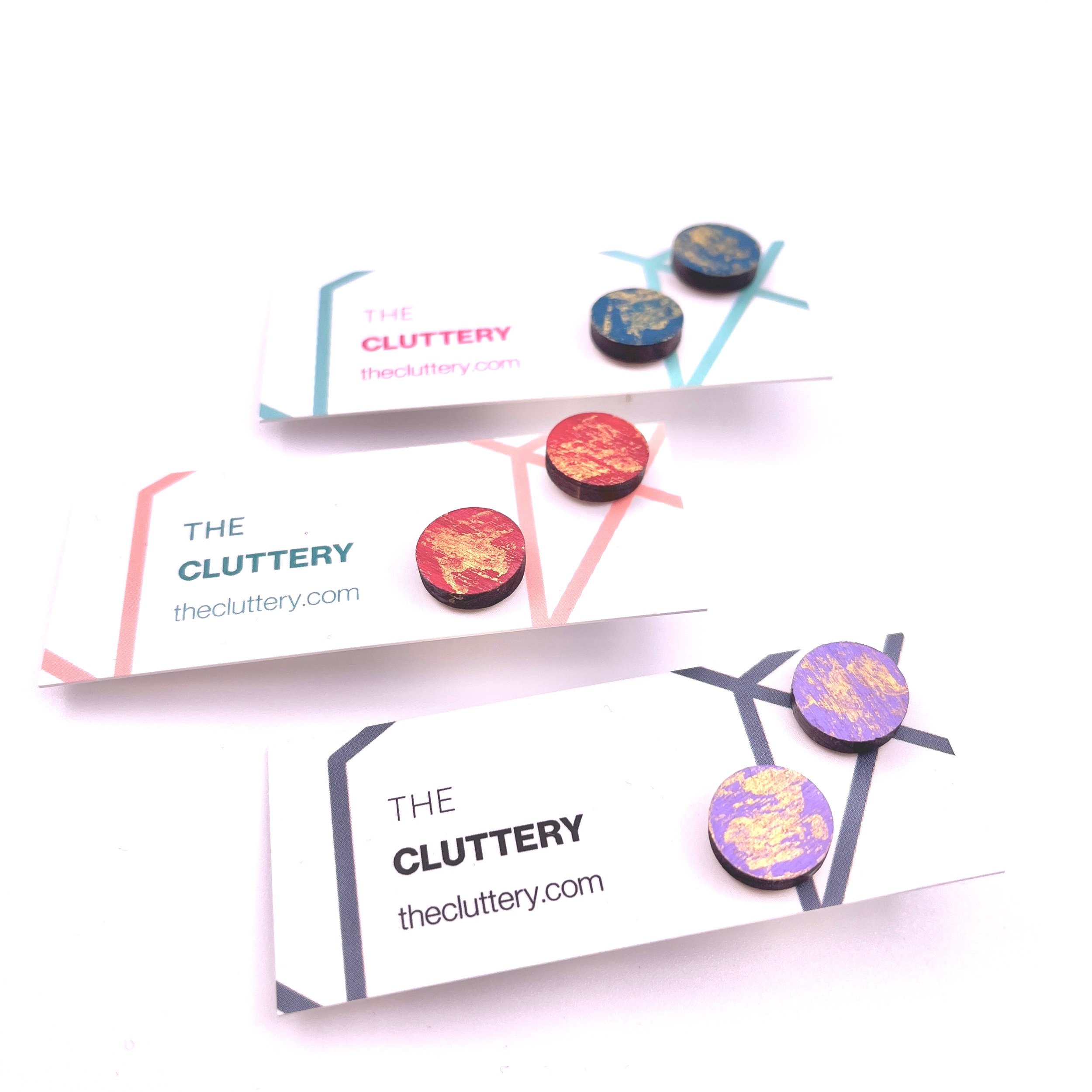How I Hand Paint Jewellery - Part 2
In Part One I showed you how I use paint pens to colour the wooden pieces in my Floral Folk range. In this part I’ll go over how I use acrylic paints to add colour to stud earrings.
Different Strokes
I use many different techniques for applying paint, depending on the look I want.
These small studs are made from solid cherry wood which I cover in acrylic paint. This style of earring has an organic look which I would struggle to achieve using paint pens, and so I use traditional ready made paints by Pebeo and Liquitex. Through experimenting I’ve found the coverage of these affordable and accessible paints is good enough and they have decent ranges of colours that can be used straight from the tub, although I do sometimes mix my own shades too.
The Kit
I use fairly inexpensive paints, brushes and cocktail sticks.
If the grain on the wood discs seems rough, I give them a light sand first, but this is often not necessary. I brush on a couple of layers of my base colour, waiting for the first to be touch-dry before adding the second.
Base Layer
I use the paint straight from the tube.
Next I add the gold layer. I use gold for this as it seems to work with most colours and makes them pop. I also like the hint of luxe that even gold paint can give to jewellery. I apply this layer with the side of a cocktail stick, which I roll and twist around the surface to spread the paint. I’m not too precious about this stage - the looser the application the better the result. I am careful not to let the paint build up though - it should be smooth - and by rolling the stick I’m able to both add and remove paint.
Gold Accents
I use a cocktail stick to roll gold paint onto each stud.
After I’ve glued the ear post onto the reverse, I varnish the studs to give them a sheen and protect them from wear.
The Final Result
I like the haphazard look of the paint on these studs.





